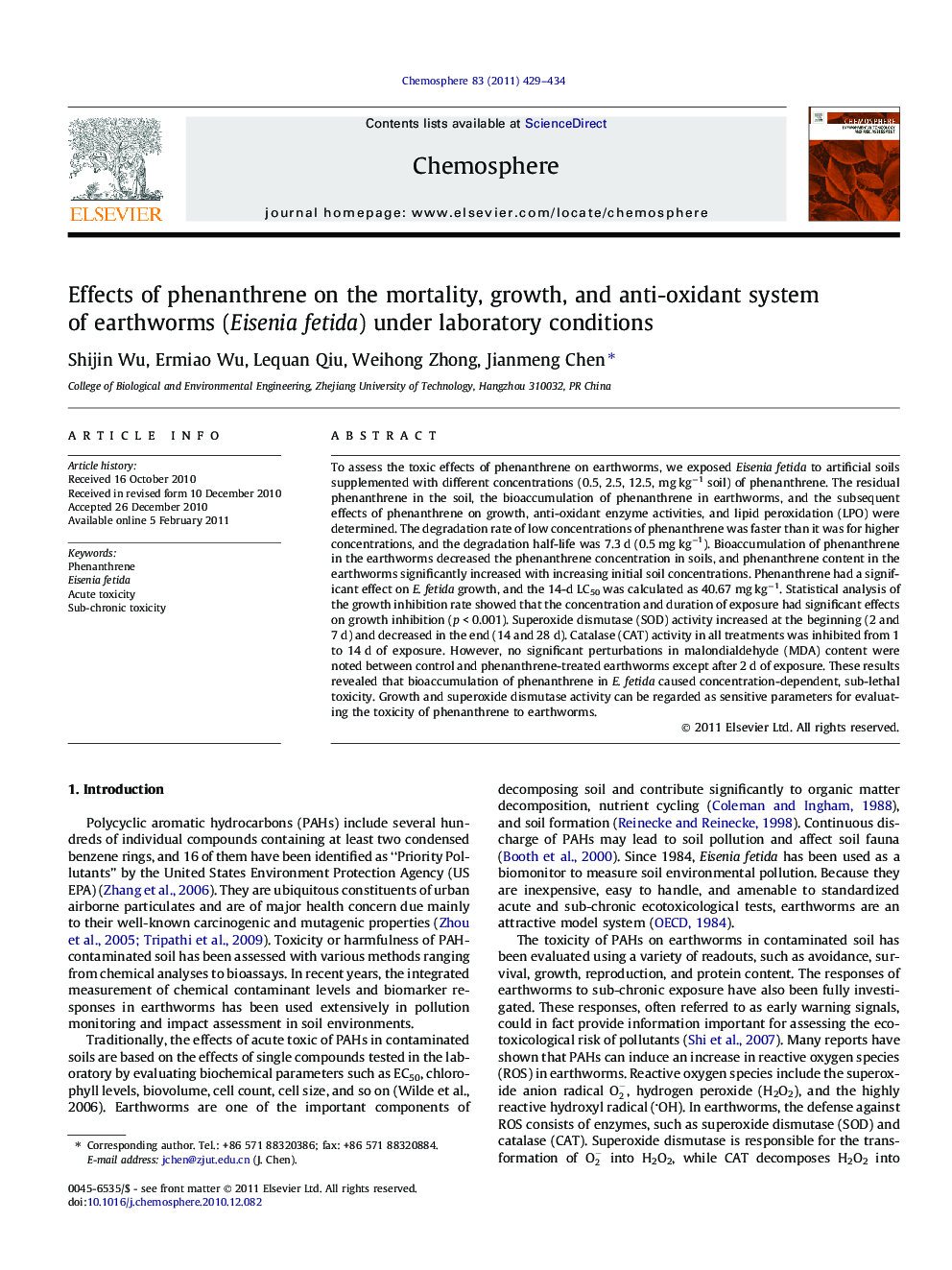| Article ID | Journal | Published Year | Pages | File Type |
|---|---|---|---|---|
| 4411062 | Chemosphere | 2011 | 6 Pages |
To assess the toxic effects of phenanthrene on earthworms, we exposed Eisenia fetida to artificial soils supplemented with different concentrations (0.5, 2.5, 12.5, mg kg−1 soil) of phenanthrene. The residual phenanthrene in the soil, the bioaccumulation of phenanthrene in earthworms, and the subsequent effects of phenanthrene on growth, anti-oxidant enzyme activities, and lipid peroxidation (LPO) were determined. The degradation rate of low concentrations of phenanthrene was faster than it was for higher concentrations, and the degradation half-life was 7.3 d (0.5 mg kg−1). Bioaccumulation of phenanthrene in the earthworms decreased the phenanthrene concentration in soils, and phenanthrene content in the earthworms significantly increased with increasing initial soil concentrations. Phenanthrene had a significant effect on E. fetida growth, and the 14-d LC50 was calculated as 40.67 mg kg−1. Statistical analysis of the growth inhibition rate showed that the concentration and duration of exposure had significant effects on growth inhibition (p < 0.001). Superoxide dismutase (SOD) activity increased at the beginning (2 and 7 d) and decreased in the end (14 and 28 d). Catalase (CAT) activity in all treatments was inhibited from 1 to 14 d of exposure. However, no significant perturbations in malondialdehyde (MDA) content were noted between control and phenanthrene-treated earthworms except after 2 d of exposure. These results revealed that bioaccumulation of phenanthrene in E. fetida caused concentration-dependent, sub-lethal toxicity. Growth and superoxide dismutase activity can be regarded as sensitive parameters for evaluating the toxicity of phenanthrene to earthworms.
Research highlights► Phenanthrene had a significant effect on Eisenia fetida. ► Bioaccumulation of Phe in E. fetida caused concentration-dependent, sub-lethal toxicity. ► No significant perturbations in malondialdehyde (MDA) content were noted. ► Growth and superoxide dismutase activity can be regarded as sensitive parameters.
